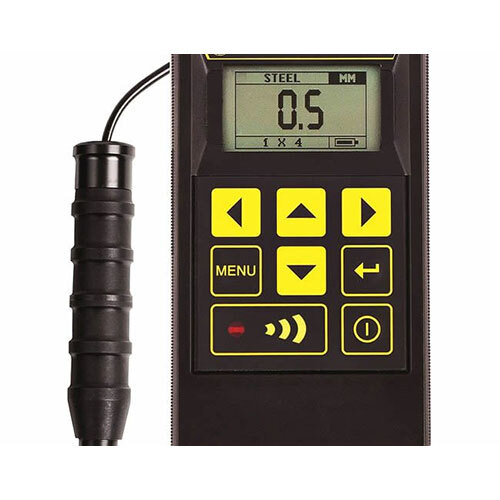Magnetic Eddy Current Flaw Detector
Product Details:
- Product Type Magnetic Eddy Current Flaw Detector
- Material Plastic
- Usage Industrial
- Power Supply Battery Operated
- Color Black
- Click to View more
X
Magnetic Eddy Current Flaw Detector Price And Quantity
- 1 Piece
Magnetic Eddy Current Flaw Detector Product Specifications
- Magnetic Eddy Current Flaw Detector
- Plastic
- Industrial
- Battery Operated
- Black
Magnetic Eddy Current Flaw Detector Trade Information
- 7-10 Days
Product Description
A magnetic eddy current flaw detector is a non-destructive testing (NDT) instrument used to detect surface and near-surface flaws in conductive materials. It operates based on the principles of electromagnetic induction.
Here's how it generally works:
1. Generation of Magnetic Field: The device generates a magnetic field around the material being tested. This magnetic field induces eddy currents within the conductive material.
2. Eddy Currents Interaction: When the magnetic field encounters a flaw or defect in the material, the eddy currents are disrupted or distorted. This distortion is due to changes in the electrical conductivity or magnetic permeability caused by the presence of the flaw.
3. Detection of Disturbances: Sensors in the flaw detector detect these disturbances in the eddy currents. Changes in the amplitude, phase, or frequency of the eddy currents can indicate the presence and characteristics of a flaw.
4. Data Analysis: The signals detected by the sensors are processed and analyzed by the instrument's electronics. This analysis can provide information about the location, size, shape, and orientation of the flaw.
5. Display and Interpretation: The results are typically displayed on a screen or through other output methods. Trained operators interpret these results to determine the significance of any detected flaws and whether further investigation or corrective action is needed.
Magnetic Eddy Current Flaw Detector Applications:
1. Aerospace Industry: Magnetic eddy current flaw detectors are used to inspect aircraft components such as turbine blades, engine parts, landing gear, and fuselage structures for cracks, corrosion, and other defects. Ensuring the integrity of these components is vital for aviation safety.
2. Automotive Industry: In automotive manufacturing, these flaw detectors are employed to inspect critical components like engine blocks, cylinder heads, suspension parts, and drivetrain components for defects that could compromise performance or safety.
3. Railway Industry: Magnetic eddy current testing is utilized to inspect railway tracks, wheels, axles, and other components for defects such as cracks, wear, and material degradation. Detecting flaws early helps prevent accidents and ensures the reliability of railway infrastructure.
4. Petrochemical Industry: Pipelines, storage tanks, and pressure vessels in the petrochemical industry are subject to corrosion, erosion, and other forms of degradation over time. Eddy current testing is used to assess the integrity of these assets without the need for invasive inspections.
5. Power Generation: Turbine blades, generators, and other components in power generation plants are subjected to harsh operating conditions and high stress. Flaw detection using eddy current testing helps identify defects early, minimizing the risk of failures and downtime.
6. Manufacturing and Fabrication: Magnetic eddy current flaw detectors are integrated into manufacturing processes to inspect welds, castings, forgings, and other fabricated components for defects such as cracks, porosity, and incomplete fusion.
7. Structural Inspection: Eddy current testing is used to assess the structural integrity of bridges, buildings, pipelines, and other infrastructure assets. It helps identify corrosion, fatigue cracks, and other defects that could compromise safety and performance.
8. Material Sorting and Quality Control: In material processing industries like steel production, eddy current testing is used for sorting and quality control purposes. It helps identify and segregate materials with defects or inconsistencies in their composition.
Enter Buying Requirement Details
 English
English Spanish
Spanish French
French German
German Italian
Italian Chinese (Simplified)
Chinese (Simplified) Japanese
Japanese Korean
Korean Arabic
Arabic Portuguese
Portuguese


 Call Me Free
Call Me Free